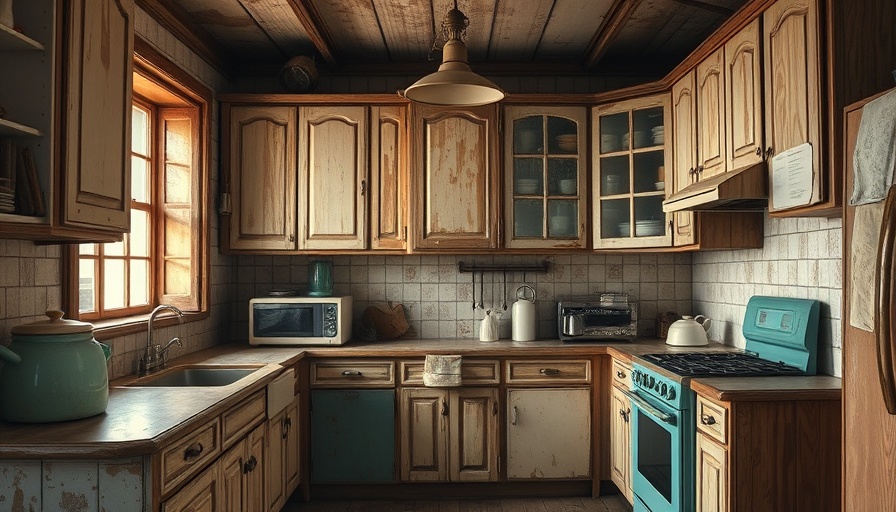
Revitalize Your Kitchen: A Step-by-Step Guide to Cleaning Old Cabinets
Let’s face it: kitchen cabinets have seen things. From splattered spaghetti sauce to greasy fingerprints, every meal leaves its mark, and over time, those once pristine cabinets can start to resemble a haunted house. Whether you’re gearing up for a kitchen refresh in Atlanta or trying to impress guests with a clean dining space in Philadelphia, fear not! With some expert tips from professional cleaners, we can help you reclaim your kitchen’s former glory with a thorough cabinet cleaning.
Know Your Kitchen Cabinets
Before diving into the scrubbing, it’s essential to understand what you’re working with. Determine if your cabinets are made of real wood, veneer, or painted MDF (medium-density fiberboard). "Start by assessing the cabinet’s finish: is it painted, stained, or sealed wood? This evaluation is key to choosing the right cleaning products," advises Matty of Wayfinder Cleaning Services. Diving in without this knowledge could lead to chemical roulette that harms your cabinets.
If you’re cleaning the interiors, empty out all contents—including that can of creamed corn from 2008. This not only makes scrubbing easier, but it’s also a perfect opportunity for cleaning your dishes and cookware. For external cleaning, leave the contents be! Remember to protect your flooring and countertops by laying down rubber-backed drop cloths or a waterproof tarp. It’s the best way to keep any residual cleaning agents from ruining your surfaces.
Choosing the Right Cleaning Supplies Matters
You wouldn’t go into battle without your best tools, and the same is true for cleaning. Use soft microfiber cloths, non-abrasive sponges, and soft-bristle brushes to thoroughly clean the cabinets without causing damage.
"Use the smooth side of the cloth for rougher wood or surface textures; it’ll glide more easily, keeping things gentle yet effective," says Matt Christou of the Big League Clean Team. With the right supplies in hand, you'll be well on your way to achieving those sparkling results!
Cleaning Techniques that Work Wonders
Start with a mild dish soap mixed with warm water for general dirt and grime. Apply with a microfiber cloth and rinse with clean water. For tougher spots, vinegar and baking soda become your allies—sprinkle some baking soda on the area, apply vinegar, and let it fizz away stubborn stains. Finish up with a dry cloth, and don’t forget those cabinet knobs and handles—they can hold a surprising amount of grease!
If your cabinets are greasy, consider a solution of equal parts water and vinegar. For particularly stubborn spots, a commercial degreaser may be necessary—just ensure it’s safe for your cabinet’s material.
Maintaining Your Kitchen Cabinets: A Long-Term Strategy
Once your cabinets are sparkling clean, maintaining that shine is crucial. Regularly dry dust them and deeply clean every few months to prevent buildup. Invest in cabinet oils or waxes that will keep the wood moisturized and protected.
Beyond traditional cleaning, consider optimizing your kitchen’s layout. Often, these spaces can benefit from thoughtful organization. This not only preserves a cleaner space but also enhances the efficiency of your cooking zone.
While You're at It: Consider a Full Kitchen Refresh
As you dig into cleaning your cabinets, you might stumble upon ideas for a full kitchen renovation. If your cabinets are beyond saving, investigating new construction homes or available real estate in your area could open up exciting opportunities. Websites like Redfin or Zillow can help you explore kitchens that inspire you without the scrubbing!
Your Next Steps: Embrace the Process
Cleaning and maintaining your kitchen cabinets requires time and effort, but the end result rewards you with a fresh, inviting space. As you step back and admire your work, consider using kitchen decor or organization tools to keep your cabinets functional and attractive.
Conclusion: Take Your Kitchen to the Next Level
Ready to transform your kitchen? Embrace these cleaning techniques and consider visiting real estate websites or local listings to fuel any renovation dreams. Take action today to create a kitchen that not only meets your needs but also showcases your personal style!
 Add Row
Add Row  Add
Add 



Write A Comment